Bite Inhibition: How to Teach a Puppy to Not Bite
Is your new pup biting everything? Learn effective ways to curb this behavior by teaching bite inhibition.
Is your new pup biting everything? Learn effective ways to curb this behavior by teaching bite inhibition.
by Vivian Zottola, MSc, CBCC, | March 27, 2024
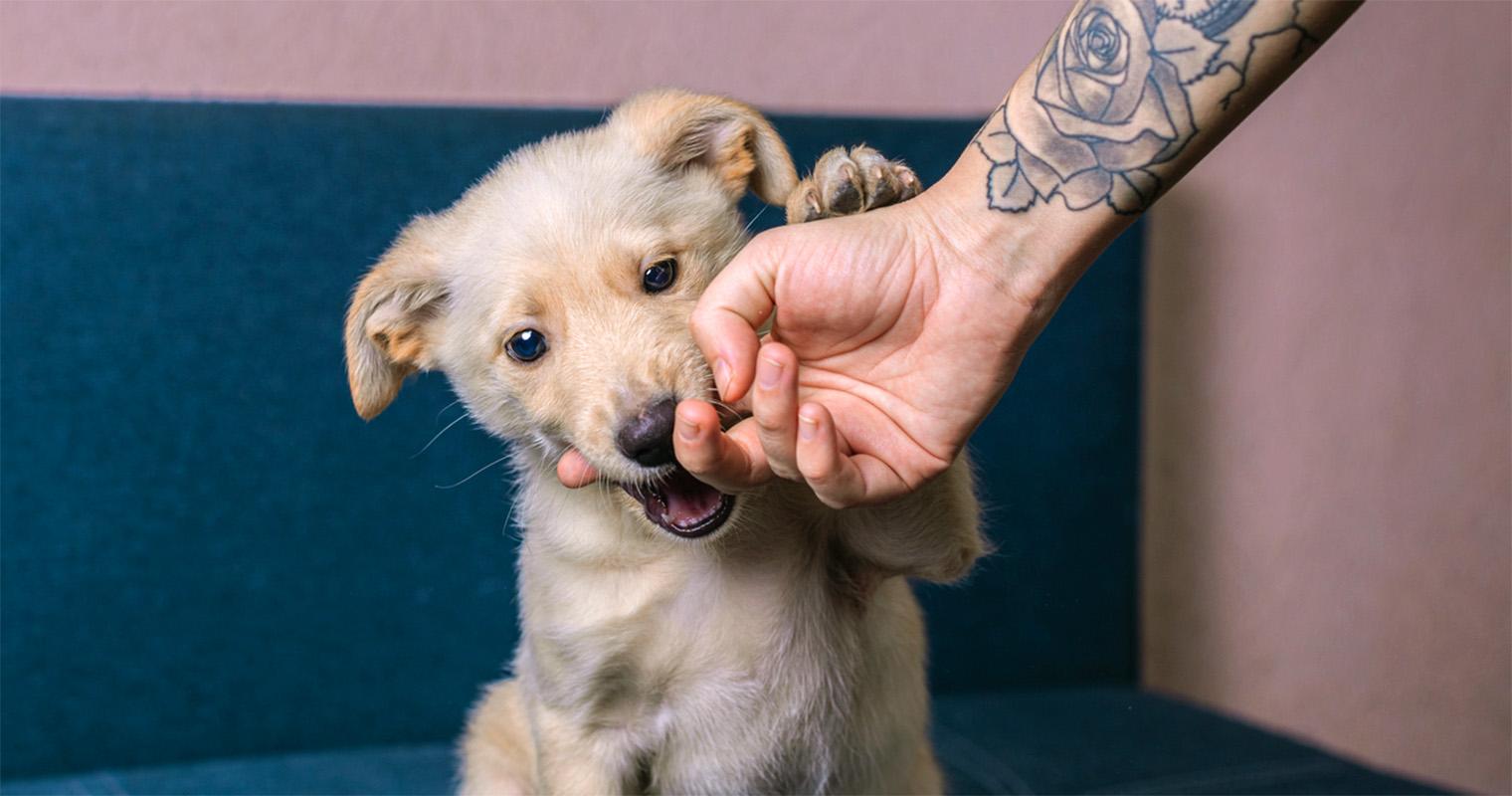
Viacheslav Chernobrovin / iStock
Teaching a puppy not to bite — also known as bite inhibition — is at the top of the list when planning a training program for a puppy. And addressing this early in their physiological and psychological development is recommended, when possible.
Dogs’ intense jaw pressure and sharp teeth have evolved for survival, to ward off threats and digest food. While they’re not doing a whole lot of surviving these days, dogs still use their mouths to explore. Left unchecked, biting and nipping can become a big problem over time. It’s our responsibility to teach puppies to control their bites when engaging with people, and help them practice this by facilitating playtime with other dogs. Success will come at an early age, and require patience and feedback from people and other dogs.
Biting is a natural behavior, which helps puppies learn how to interact with other dogs and people. It’s essential to their development and helps them become well-adjusted adults. Although it may sound counterintuitive to promote the behavior, if puppies are not exposed to biting, they won’t learn to control their biting pressure during their early years. This could cause severe problems as they grow up, because they never learned appropriate bite inhibition during social interactions.
Puppies will chew and bite on things because they are teething, and this need to bite on things continues up until they enter the adolescence stage which starts between five and six months. All dogs, regardless of breed, generally grow 42 teeth in their lifetime. The first set of 21 razor-sharp baby teeth come in at around eight weeks and begin to drop out at five and six months of age to make room for adult teeth. Baby teeth are intentionally sharp, designed by nature to help puppies learn when it’s time to wean away from the milk mom provides and move on to solid food.
This is also a time when puppies engage in social interactions with their littermates, learning to control their bite pressure through mouthing and play-fighting. They learn through the consequences of their actions. When they bite too hard, the result is usually that none of their puppy friends want to play with them.
A young puppy receives important feedback through interactions with us and other dogs. Puppy nipping happens unintentionally as they interact with people and dogs, and learn to control their mouths. By biting as a mistake, young dogs learn to develop softer bites.
The term “bite inhibition” refers to controlling the level of a bite, and bite-inhibition training will coincide with teething. Your goal is to teach your puppy to be gentle and not to use their teeth as a form of play, attention, or communication with humans.
The ideal time to teach a puppy not to bite is before they reach 18 weeks of age, in a social setting with other puppies of similar age. While the puppy learns what’s acceptable and what’s not with dog friends, you can work on teaching the puppy what’s acceptable back at home and in public encounters with other people. However, you’re in for a bit of a challenge once your puppy begins teething between eight and 24 weeks of age. It’s a time when they want and need to chew and bite to relieve pain.
You’ll need to teach your puppy how to control their bite pressure, while also managing other developmental needs. Chew-training is also essential during the eight to 24-week period, while your puppy is teething. During this time, encourage your puppy to chew appropriate items while discouraging destructive chewing behavior. Typically, puppies will seek out objects to chew as a way to relieve the pain of teething. This activity is necessary to help their teeth break through the gums and make way for new canine teeth.
For too long people have read that after six months a puppy will stop biting, only to find out it doesn’t magically happen. The earlier you start to train your puppy, the faster you will see improved biting behaviors. With some planning and kind management, you can expect puppies to reduce biting when they are six to nine months old, and possibly even sooner. This depends on how vigilantly you manage the biting, as well as other factors such as dog breed, learning history, and environmental differences. But it’s important to understand that you cannot expect your dog to stop biting altogether.
Opportunities to teach are endless when living with a puppy, and training baby dogs at the moment a biting behavior occurs is never a bad policy. Puppy bites hurt, and they are usually unintentional at this stage. Take a breath and step away when you get frustrated. When you’re ready, here are a few suggestions to help your puppy learn not to bite.
A dog’s adult teeth grow in between four to six months, and molars around seven to eight months. Your puppy will learn to control the force of their bites naturally during puppy play-biting. If possible, enroll your puppy in a class before they are 18 weeks old, to teach them to use their mouth softly. The best time to train them is during their pre-teething period, as they’re playing with other pups.
The time-out strategy for dogs is very different from the one used with children. Banishing your puppy to a crate as punishment for biting can cause confusion, frustration, and a negative association with crates, which you may need for bladder-control training. Meanwhile, a sudden, loud, painful sound (like “ouch!”) may startle your puppy, potentially stopping them from biting. But both are merely temporary solutions.
Dogs have varying sensitivity levels, which can cause some puppies to become nervous or overstimulated from these actions and bite even more. Instead of removing your puppy from the situation or making a loud noise, remain calm, take a deep breath, fold your arms, and move away from the puppy for a short while. Your company is a powerful motivator for your puppy, and removing yourself is, in itself, a punishment. It teaches your puppy that biting may result in less attention and fun, a consequence they will learn to avoid. Ultimately, you want to help your puppy understand that biting results in the person they love leaving their sight, which can be a powerful motivator for them to stop this behavior.
If your puppy still bites despite trying to redirect this behavior with a chew toy or an alternate behavior, instead of shouting “ouch” and standing still, slowly verbalize in a low tone, “You lose,” “Too bad,” or “Time out.” Then distance yourself immediately. It’s best to find a hiding place behind a door and remain still for five seconds. Build up to 10 seconds and repeat the same steps as many times as necessary. Be patient — your puppy will make the connection between their biting and you moving away from them.
It may be cute, but letting a puppy chew on your fingers and hands can inadvertently teach them that it’s acceptable to bite human hands. Instead, provide them with an appropriate chew toy similar in texture to your fingers. Additionally, you can use a hide-and-seek game to encourage puppies to take food from your hands gently. Hold a treat in your hand and close your fist behind your back. Present your closed palm toward the puppy and wait for the puppy to touch your fist with their nose or tongue. Say “gentle,” and open your fist for the puppy to take the treat. Repeat this exercise five to 10 times for a few days.
If your puppy bites your hand, arm, or your clothes, ask them to sit or nose-target instead. If they haven’t learned these skills, lure the puppy using food to interrupt the behavior. Motivating a puppy to earn a food reward can also interrupt any underlying emotions in the moment. If a puppy continues to use teeth when taking food from your fingers or hands, this may be a sign they are in distress. Survey the surroundings for anything that may be causing distress. You could also try using the exercise described above (“Teach your puppy to be gentle”) to encourage your puppy to take food gently.
Biting can also be used like barking, as an attention-seeking behavior to cause you to squeak and to elicit fun. By keeping your puppy on a routine and ensuring their basic needs are met — including food, water, and social fun with other dogs and people — you can reduce any kind of dysregulation and attention-seeking behavior. It’s also important to help your puppy learn alternatives to biting, as a means of communication.
It’s essential to never hit a puppy in response to mouthing or play-biting. This is never an acceptable solution and will cause life-long psychological damage. Instead, use methods that are less intrusive and minimally aversive. Keep in mind that biting can occur accidentally, out of frustration, from confusion, or even as a learned behavior to get your attention.
Developing a trusting relationship with your pup takes time, patience, and compassionate handling. If you feel unsafe or are struggling, don’t hesitate to seek assistance from your veterinarian or a certified behavior consultant. Working with professionals who rely on methods free of fear, pain, and intimidation is key to instilling long-lasting change and reducing the risk of further biting.
Crates are designed to help puppies learn bladder control before they’re four months old. But too often, we rush it and create negative associations. (For instance, if they’re confined in a small crate, that negative association could involve claustrophobia.) Giving puppies something they enjoy while in their crate helps make positive associations with being confined. Since dogs less than four-months old sleep for up to 17 hours a day, crate-training goes smoother when they are young. However, while it’s necessary to crate dogs through their puppy and adolescence stages so they don’t get into trouble, long-term use is not a good idea. Closed confinement can result in depression, because it restricts their choices, such as playing with toys, drinking water, or stretching out.
You can stop your puppy from jumping on you and others by rewarding their non-jumping behaviors (such as when they have all their paws on the ground) through words of encouragement and a treat. If your puppy jumps up on you while you’re standing, you can also turn your head away and fold your arms to show that this isn’t desired behavior. For more on why dogs jump and how to curb that behavior, refer to our comprehensive guide.
You can start house-training (or bladder-control training) by containing your puppy to a large area using an expandable gate. Place an open crate in that area, with puppy pads just outside the crate door. Make the inside of the crate comfortable, and even place a chew there. Allow your puppy to take their time going in the crate and sleeping in it overnight with the door open. They will use the toilet outside, away from the sleeping area. This is the least stressful approach for baby dogs. For more help with bladder-control training, hire a qualified trainer using methods free of fear, pain, and intimidation.
Emotions and Dog Bites: Could Predatory Attacks Be Triggered by Emotional States?
How to Stop Your Puppy from Biting
Importance of Puppy Training for Future Behavior of the Dog
An Investigation into the Impact of Pre-Adolescent Training on Canine Behavior
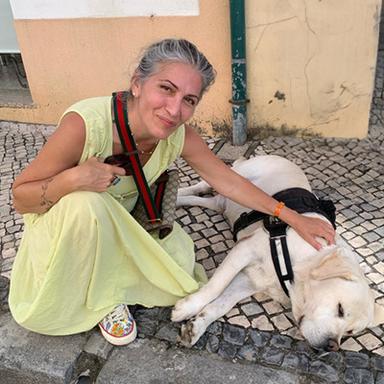
Vivian Zottola, MSc, is an applied anthrozoologist, dog psychologist, member of the Dog Writers Association of America, and research associate with the Center for Canine Behavior Studies, Inc. She runs her own practice in Boston, MA, specializing in the prevention and resolution of behavior challenges between humans and pet companion dogs. She also produces the podcast Click Therapy for Dogs and the People Who Love Them. Find her on Instagram.
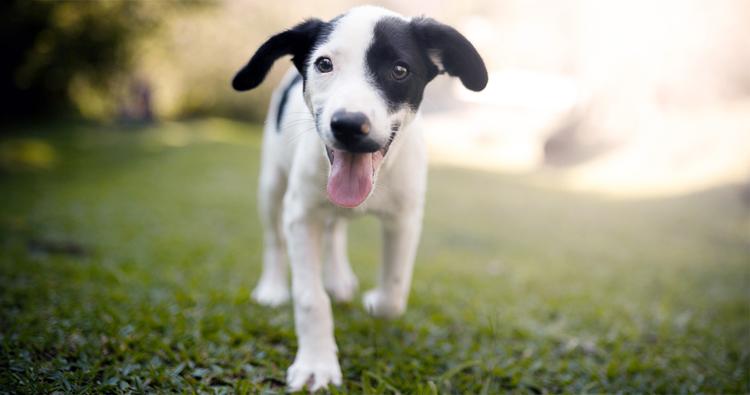
Adoption Advice

Adoption Advice
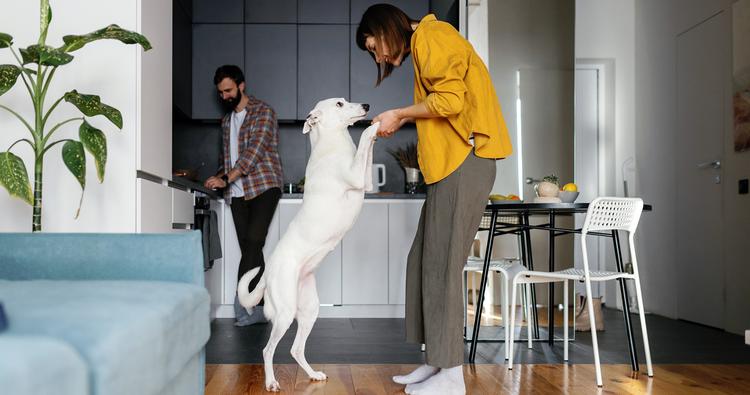
Behavior & Training
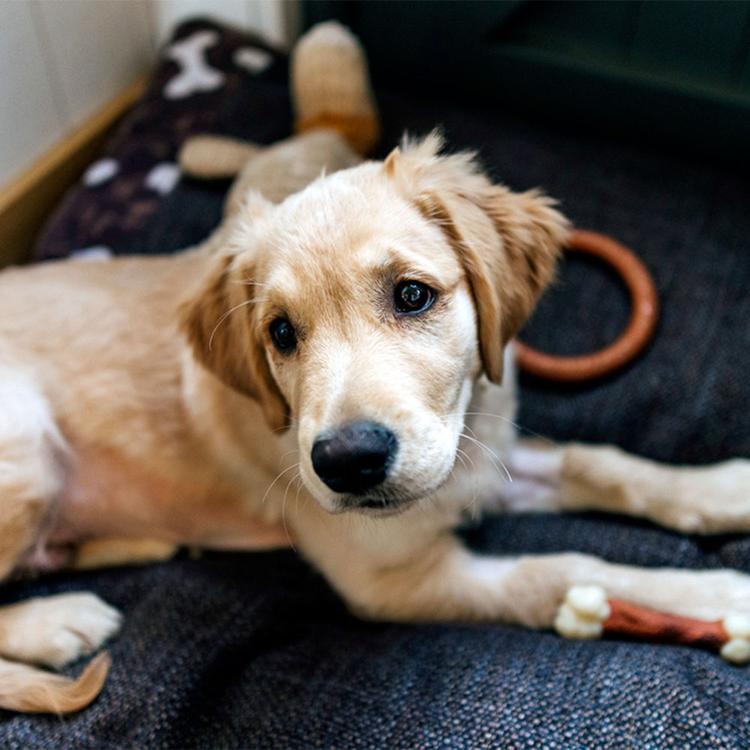
Behavior & Training

Breed Info
Are Dachshunds the worst breed ever? No — but they get a bad rap. There’s a lot of charm behind those quirks. Learn why they might just be the best breed ever.
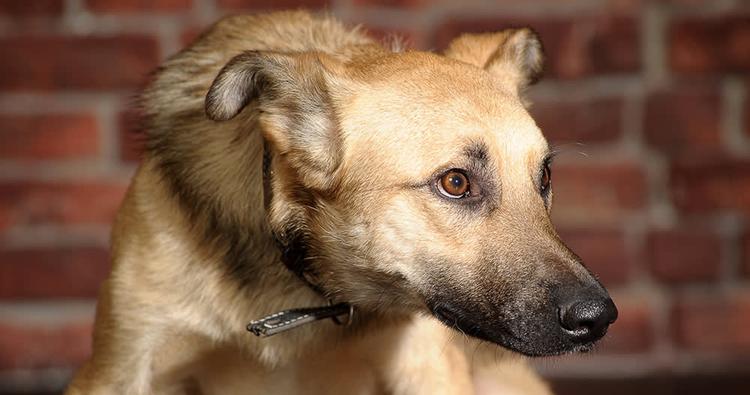
Behavior & Training
Vivian Zottola, MSc, CBCC, has all the answers (not to mention helpful dog-training tips) to transform your unhappy pooch into a calm, content dog.

Breed Info
Are Pit Bulls dangerous? Uncover the truth behind stereotypes and myths surrounding these misunderstood dogs
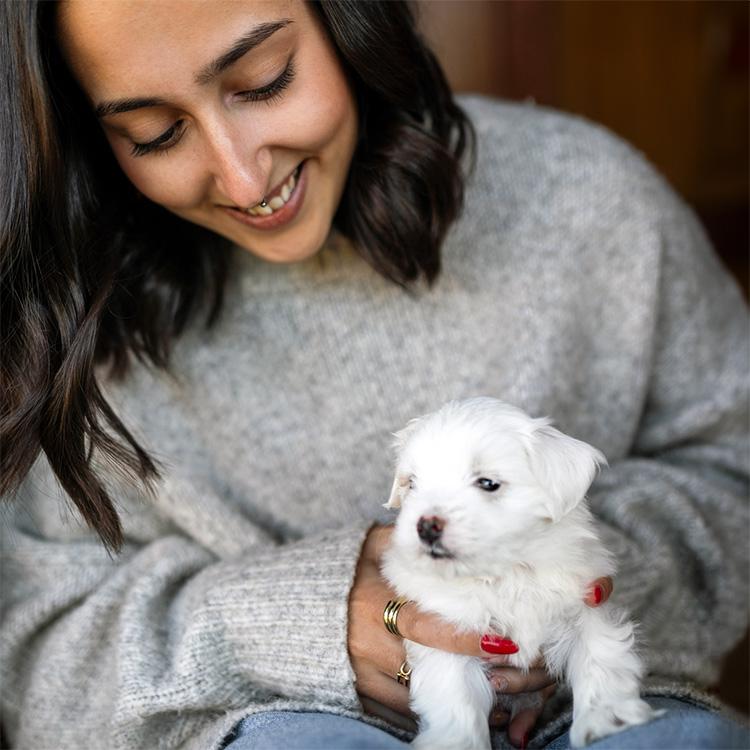
Adoption Advice
Here’s what you should know about dog vaccines.